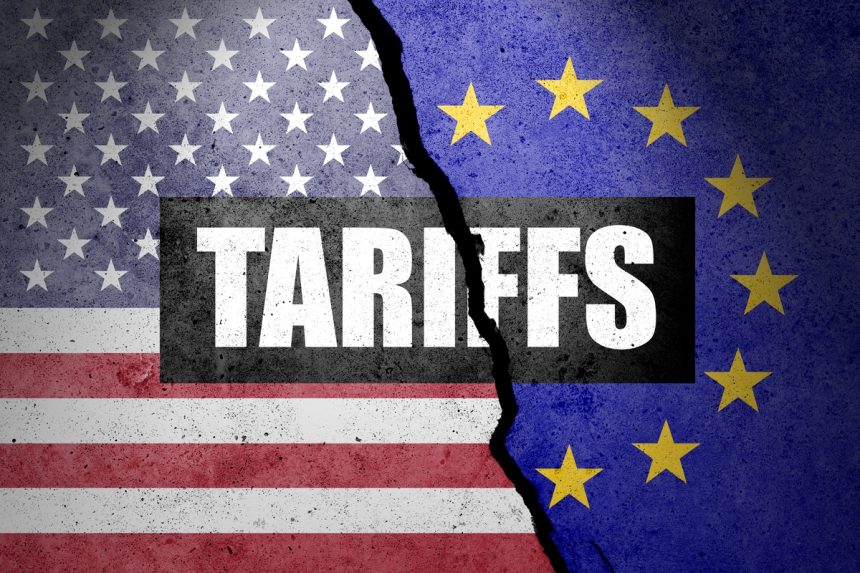American consumers are bracing for rising prices as the Trump administration rolls out a sweeping series of import tariffs targeting goods from nearly 70 countries. With some tariffs as high as 55%, businesses and households alike are beginning to feel the ripple effects in everything from grocery bills to clothing tags. Experts warn these trade measures, though aimed at boosting domestic manufacturing, could cost U.S. households thousands in the short term.
A Surge in Tariffs: What Changed?
President Donald Trump’s new tariff policy represents one of the largest hikes in nearly a century. On Thursday, the U.S. began enforcing new tariffs ranging from 15% to 50% on products from dozens of countries. Chinese goods face the steepest hit—55%—if a trade deal isn’t reached by next week.
Trump’s stated goal was to make trade “reciprocal” and stimulate domestic manufacturing. “Retailers have been able to hold the line on pricing so far, but the new increased tariffs will significantly raise costs for U.S. retailers, manufacturers and consumers,” said Jon Gold, Vice President at the National Retail Federation.
Rising Retail Prices Are Just the Start
While businesses initially absorbed the increased costs, the pressure is now showing. Prices for groceries, appliances, and furniture began rising in June. According to the Budget Lab at Yale, these tariffs will increase short-term prices by 1.8%—an estimated $2,400 hit per U.S. household.
Even more concerning, this is only based on tariffs implemented through Wednesday. With further hikes on goods from India, Brazil, and potentially China, the situation could worsen.
From Bananas to Burgundy: Food and Drinks Affected
The U.S. doesn’t produce enough of many staple foods—like bananas, coffee, or fish—to meet consumer demand, making these imports vulnerable to tariff-related price increases. According to the Tax Foundation, beer, liquor, and especially wine are set to rise in cost.
In a letter to the White House, Ben Aneff of the U.S. Wine Trade Alliance warned, “Mr. President, we need toasts, not tariffs, as we head into the most important season for our industry.” Aneff predicts European wine prices could spike 30% in September.
Clothing and Footwear Could See the Sharpest Hikes
The fashion industry is bracing for impact. The Budget Lab found that tariffs “disproportionately affect clothing and textiles.” Temporary shoe prices are expected to jump by 39%, with long-term increases settling around 19%. Apparel may climb 37% before stabilizing 18% above current levels.
With retailers already tightening margins, many may have no choice but to pass the extra costs on to consumers starting in the fall season.
Auto Industry Holding Back—For Now
While some luxury brands like Ferrari introduced a 10% vehicle surcharge, most automakers are waiting for more trade clarity. General Motors projected the tariffs could cost them up to $5 billion in 2025. Toyota has already seen a 37% dip in quarterly profits, directly tied to U.S. tariff effects.
If automakers begin pricing in the tariffs, car buyers could see significant sticker shock before year’s end.
Legal Battles and Policy Uncertainty
Despite these sweeping changes, the future of tariffs remains murky. The legality of Trump’s emergency powers to impose tariffs is currently being contested in U.S. courts, potentially reaching the Supreme Court.
Meanwhile, exemptions like the “de minimis” rule—allowing items under $800 to enter the U.S. duty-free—are being revoked. As of August 29, even small parcels from international e-commerce companies will face tariffs, driving up the cost of online shopping.
While President Trump’s tariff campaign aims to protect American industry and promote fair trade, the burden may fall heavily on consumers. Rising prices in food, clothing, and everyday goods are already being felt, and analysts expect more to come. “The new tariffs are the equivalent of a $2,400 loss per household,” according to Yale’s Budget Lab. As legal and trade negotiations evolve, shoppers should brace for a more expensive fall—and holiday—season.






